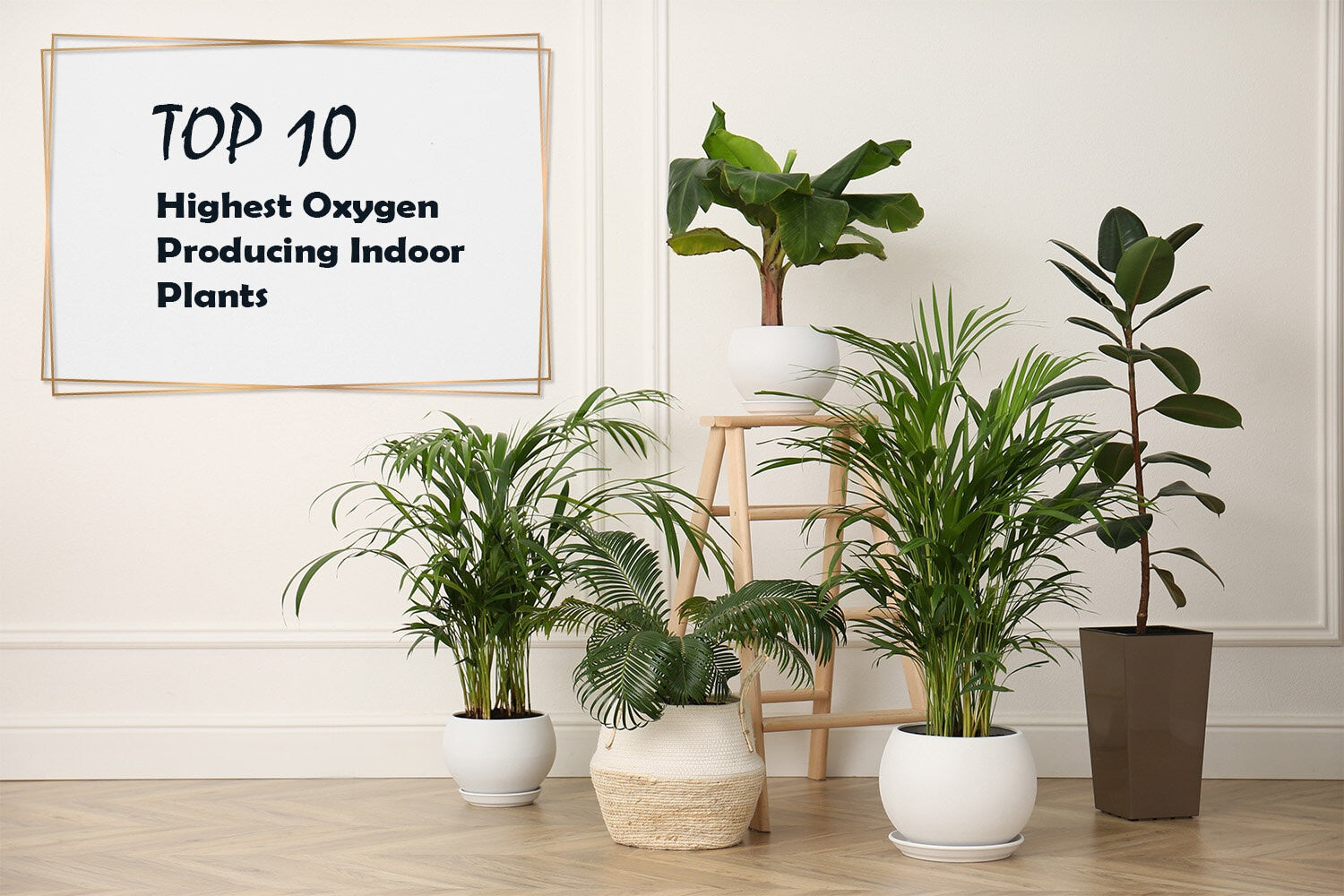What plants produce the most oxygen? This is a question my wife and I asked ourselves when we started working from home more.
Our goal is to use houseplants to naturally improve the air quality of our home, plus some plants even filter out harmful compounds from the air.
But how many plants are we talking about here?
Apparently to make any significant impact, you'd need around 2 plants for every square foot of your home.
Like any modern plant enthusiast, I took that as a challenge.
Although we're likely not going to hit those kinds of numbers, we figured any amount of plants would help, even in a small way. So, we started doing some research to find the best plants for the job.
What we found is that while all plants are good, some are just better at producing oxygen than others. But before we get to the top ten list, let's take a quick look at how plants do their thing.
How Plants Produce Oxygen (A Quick Refresher)
It all comes back to a process called photosynthesis.
Here’s the simple version: a plant takes in sunlight, water, and the carbon dioxide we breathe out. Using these ingredients, it creates its own food (sugar) and, as a wonderful byproduct, releases oxygen back into the air through tiny openings on its leaves.
This creates a beautiful give-and-take relationship. We provide the plant with what it needs to survive, and it gives us clean, fresh air to breathe.
Do Plants Make Oxygen All the Time?
This is a tricky one. We found out that not all plants produce oxygen 24/7. Most plants have a circadian rhythm, and their oxygen output changes based on the time of day.
-
Temperate Plants: These are your typical houseplants. They are pros at making oxygen during the day when the sun is out. But at night, they take a break from photosynthesis and actually consume oxygen while releasing a small amount of carbon dioxide.
-
Arid Plants: Many plants from dry climates, like succulents, are a little different. They do their photosynthesis at night. They keep their pores closed during the day to save water and then open them up at night to take in CO2. This makes them perfect for your bedroom!
How to Help Your Plants Do Their Best Work
If you want your plants to be mini-oxygen factories, you need to give them what they need to thrive. Think of this as your "Plant TLC" checklist.
-
Give them Sun: Sunlight is the most important ingredient for photosynthesis. Make sure your plants are getting the right amount of light for their specific needs.
-
Feed them: A healthy plant produces more oxygen. Give your plants a little organic fertilizer every so often to keep them happy and well-fed.
-
Keep them Hydrated: Don’t forget to water your plants! A well-watered plant will produce more oxygen, but be careful not to overwater, as that can be a real plant killer.
-
Give them Room: Plants need space to grow and breathe. Don’t overcrowd them, and prune them regularly to encourage healthy new growth.
The Top 10 Oxygen-Producing Indoor Plants
Here are the plants we found that are most effective at filling your home with clean, breathable air.
Maidenhair Fern (Adiantum spp.)
This delicate fern is a natural air purifier, absorbing and filtering pollutants with its feathery, graceful fronds. It's a great choice for adding beauty to a terrarium or hanging basket.
Velvet Philodendron (Philodendron hederaceum):
This highly oxygen-producing plant is known for its air-purifying qualities and its velvety, heart-shaped leaves. It's an easy-to-care-for plant that's perfect for adding rich greenery to any room.
Snake Plant (Sansevieria):
A low-maintenance superstar. The Snake Plant absorbs carbon dioxide at night and releases oxygen, making it the ideal plant for your bedroom.
Rattlesnake Plant (Calathea Lancifolia):
This plant is an effective air purifier, removing common pollutants like formaldehyde and benzene. Beyond its air-cleaning power, it adds a touch of nature and color with its beautiful, ornamental leaves.
Palm Ponytail
A unique, low-maintenance plant that is effective at removing pollutants like benzene and formaldehyde. Its bulbous base and slender, cascading foliage make it a great addition to any home.
Peace Lily (Spathiphyllum):
This beautiful plant is a powerful oxygen producer and air purifier. Peace Lilies are known for their ability to remove harmful chemicals such as benzene, formaldehyde, and trichloroethylene from the air, making them a great addition to any home.
Areca Palm (Dypsis lutescens):
A tall and elegant plant that is a high oxygen producer. It is also an effective air purifier and is easy to care for, making it a great choice for busy individuals.
English Ivy (Hedera helix):
This high oxygen-producing plant is also known for its strong air-purifying qualities, filtering out chemicals like benzene and formaldehyde. It's easy to care for and adds a classic touch of nature to any room.
Fiddle Leaf Fig (Ficus Lyrata):
The Fiddle Leaf Fig is a good air-purifying plant that removes pollutants like formaldehyde and benzene. It’s important to note, however, that this plant can be a bit finicky and requires specific light and temperature conditions.
Blue Star Fern (Phlebodium aureum):
This lush fern removes indoor air pollutants and releases moisture, which can help increase humidity levels. It's an attractive choice for those looking to improve air quality in dry environments.
Final Thoughts
Adding a few of these plants to your home is one of the easiest and most beautiful ways to improve the air you breathe. They don’t just look good; they work hard to make your space cleaner and healthier. Whether you're a seasoned plant parent or just getting started, these plants are a fantastic addition to your home.












